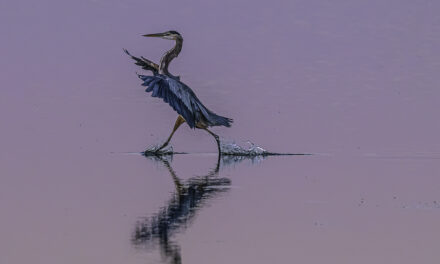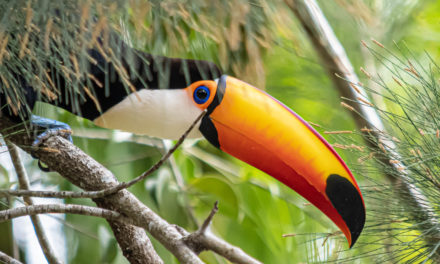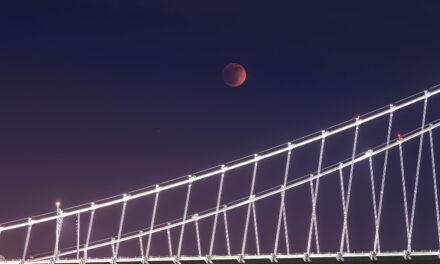Moon rise over San Diego. It was an early challenge in my quest for moon photos, and a tough one, as it turned out.
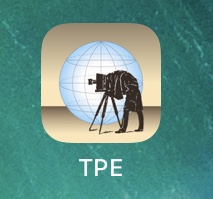
It all began in 2019 when I discovered TPE, an app that shows the location of the moon any where, anytime. This got me interested in shooting moonscapes. Learning how to plan a moon shoot using the app would take me years to master. San Diego became a laboratory in the process.
The first step in such planning is to identify when to do it, selecting what I’ve came to call the “sweet spot.” It occurs when ambient light is low enough to get a good exposure of the moon, but not so low that the moon is overexposed. In any given shoot the sweet spot lasts no more than 10-15 minutes.
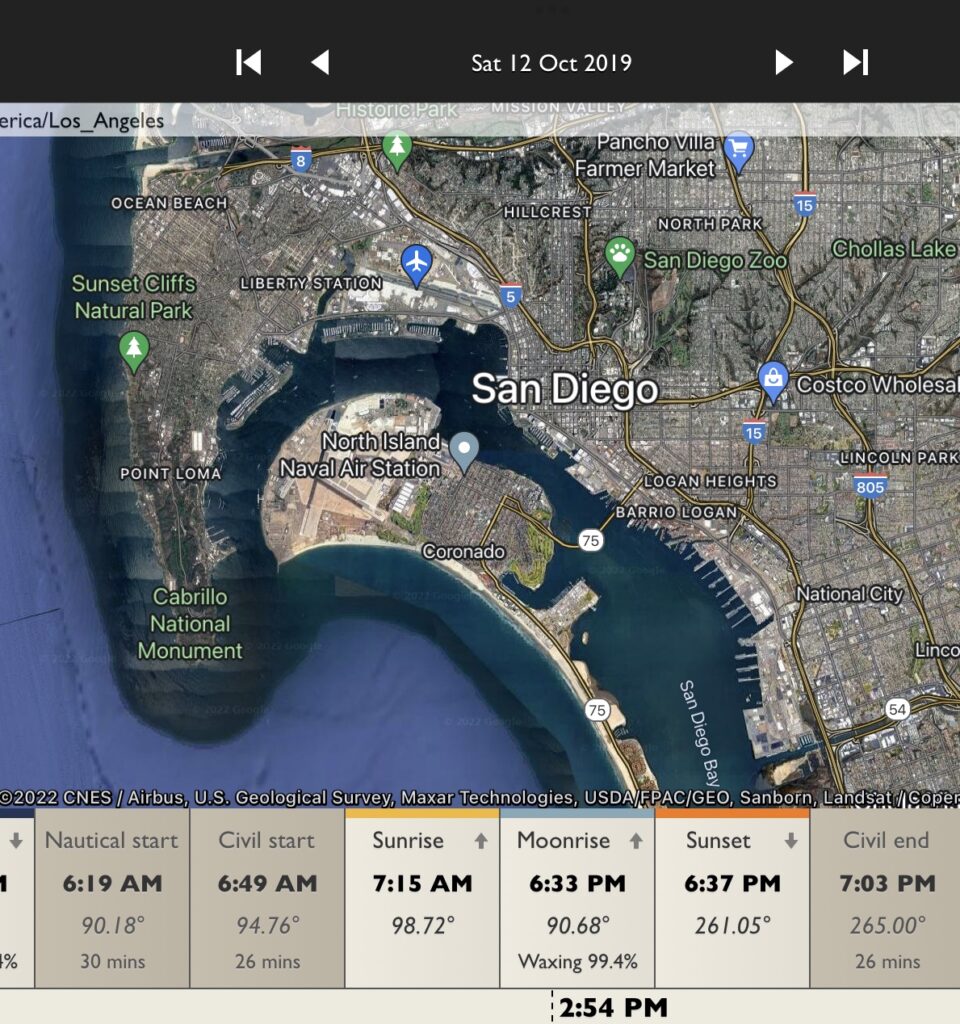
The sweet spot is easy to find on TPE. During full moon it happens when moon rise and sunset coincide with each other; same for moon set and sunrise.
Choosing shoot locations and targets is a bigger challenge. I can easily map these out. But imagining the expected picture takes advanced planning and some experience with the shoot location. I have to reconnoiter the shoot site, check it for safety, lines of sight and the best spot to set up a tripod.
This sort of planning is easy in San Francisco, a city I know well. But San Diego, despite many prior visits, turned out to be a problem.
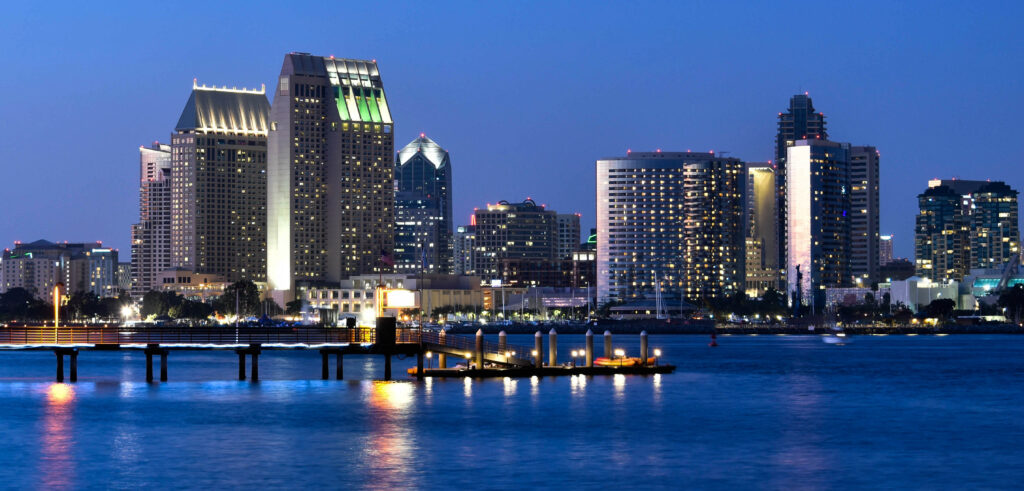
In October 2019 I set out on my first attempt. The goal was a moon rise against the San Diego skyline. The sweet spot was on a weekend. So I decided to make mini-vacation out of it. Julie and I flew in and checked into a luxurious harbor side resort in Coronado Island, a spot that afforded breathtaking views of the city.

The weekend turned out great, all except for the moon shoot. I discovered the problem as soon as I arrived at the resort. Reconning my shoot site, I noted that moon rise would coincide not with downtown but with the Coronado Bridge, an industrial behemoth with ugly shipyards at its base. Golden Gate it is not.
WTF, I thought, how could this be? I couldn’t comprehend my mistake.
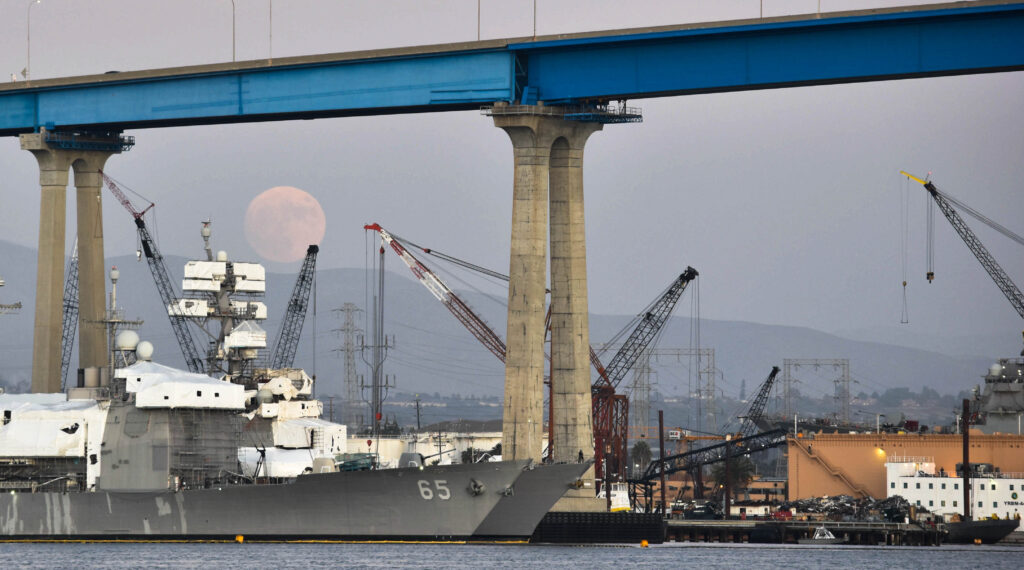
I had no means to readjust. I had not rented a car and I did not know San Diego well enough to select an alternate site. So I shot the moon against the bridge. The results were decent, but not awesome.

Several days later, as I gave the matter considerable though, I realized that Coronado did not line up evenly with downtown. I had not considered the concept of geographic parallax, the angular displacement of my intended target from the shoot site. I needed a spot further north.
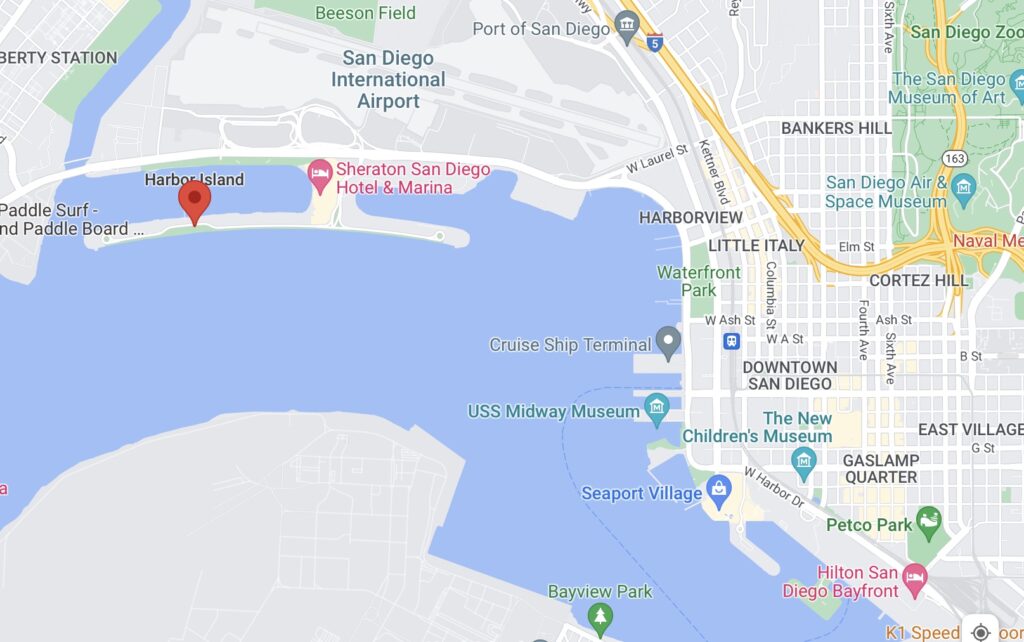
Pouring over maps I selected a new shoot spot, Harbor Island.
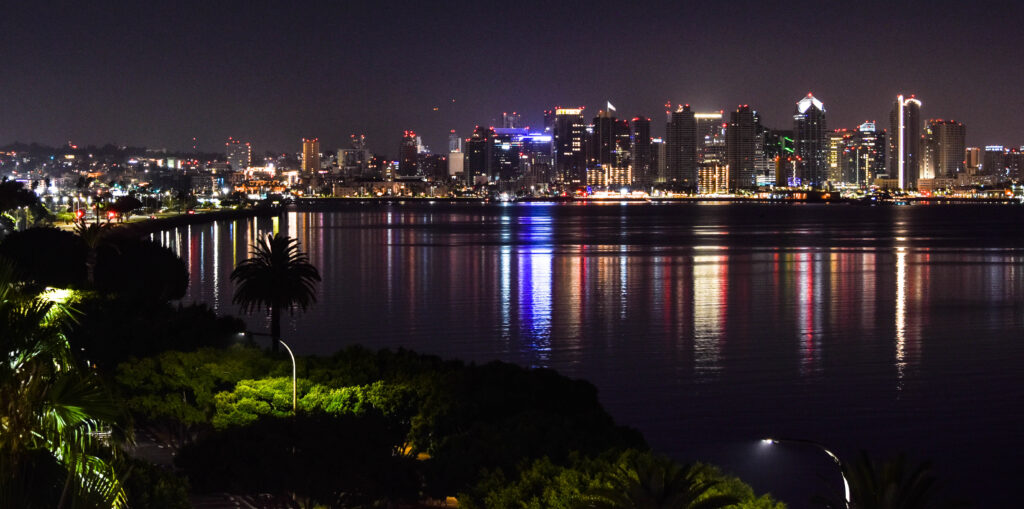
This time, determined not to screw-up, I researched the area in detail. I even selected a hotel, the Hilton, as an ideal location and narrowed it down to two specific rooms in the hotel.
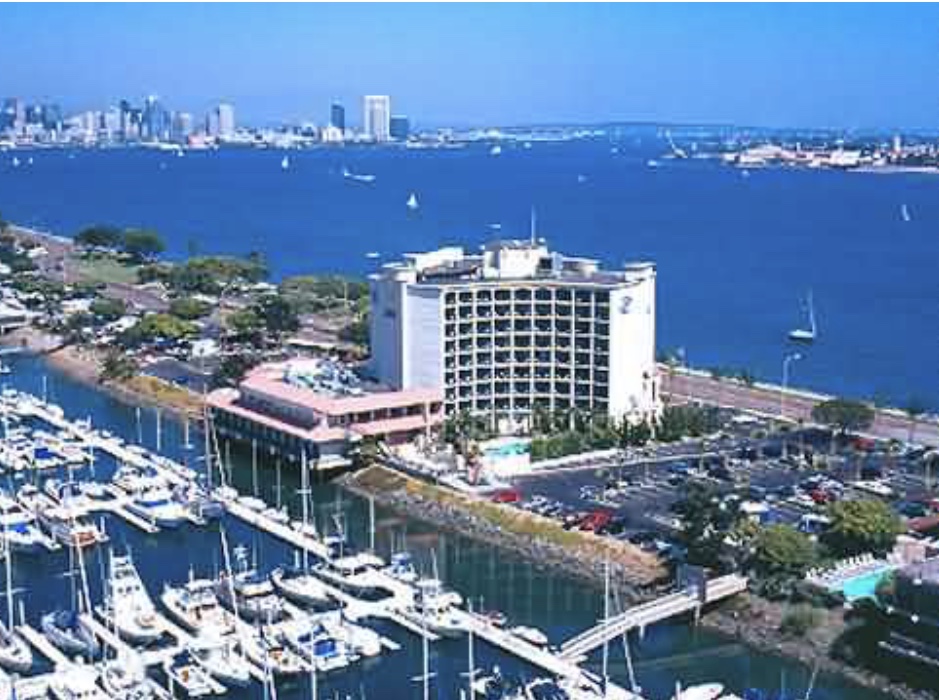
In August 2020 I embarked upon a nine-hour drive to San Diego for a second attempt. It was during the Covid lock down and I could not fly. Besides, having my own car gave me flexibility. The Hilton was nearly empty. Getting one of those two rooms was no problem.
I arrived the day before the sweet spot. The sky was clear. Perched at my hotel balcony, I took a test shot of the moon. It rose at the right location. My research had paid off.
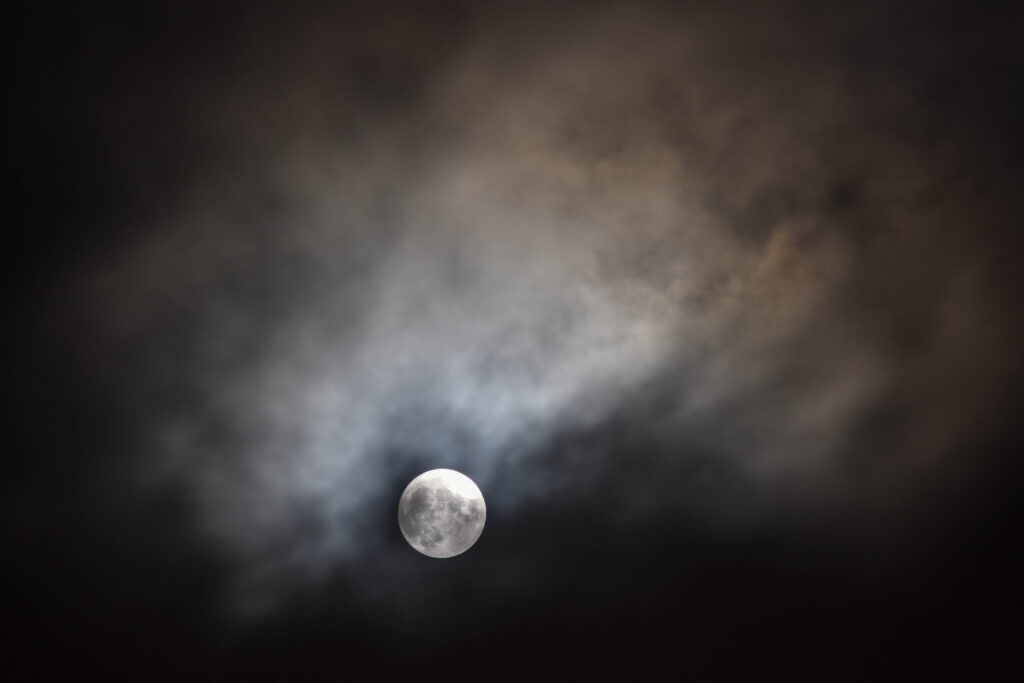
I spent the next day driving around San Diego, reconnoitering other potential shoot sites. Then, at sunset, disaster struck. The sky fogged up and obscured the rising moon. I got nothing.
Despite the best planning, weather is a variable that can spoil any shoot.
The letdown didn’t last long. I was even more determined. I resolved that I would return to San Diego for as many times as it took to get the shot.
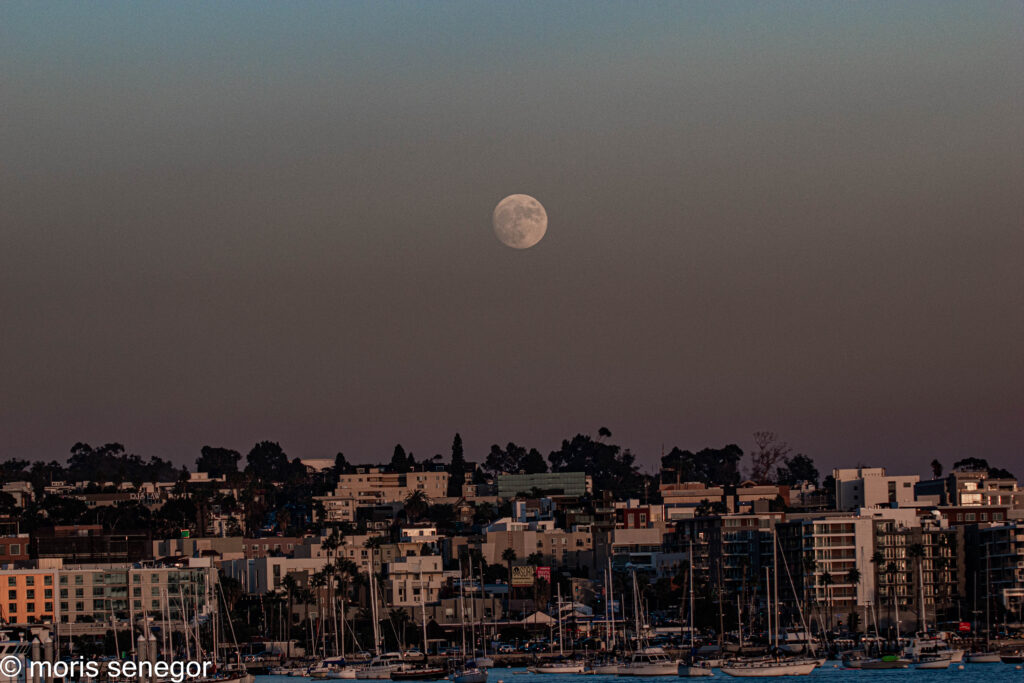
In October 2020 I drove back to Harbor Island. On this occasion there were two days with a sweet spot. My first attempt was another failure. Shooting from the easternmost edge of the island, I got a moon that rose too far north, over an uninteresting residential area.
Another lesson. A shoot spot that’s good one month is not so on another. The moon’s azimuth changes with each full moon. I had to find different shoot sites for each different full moon.
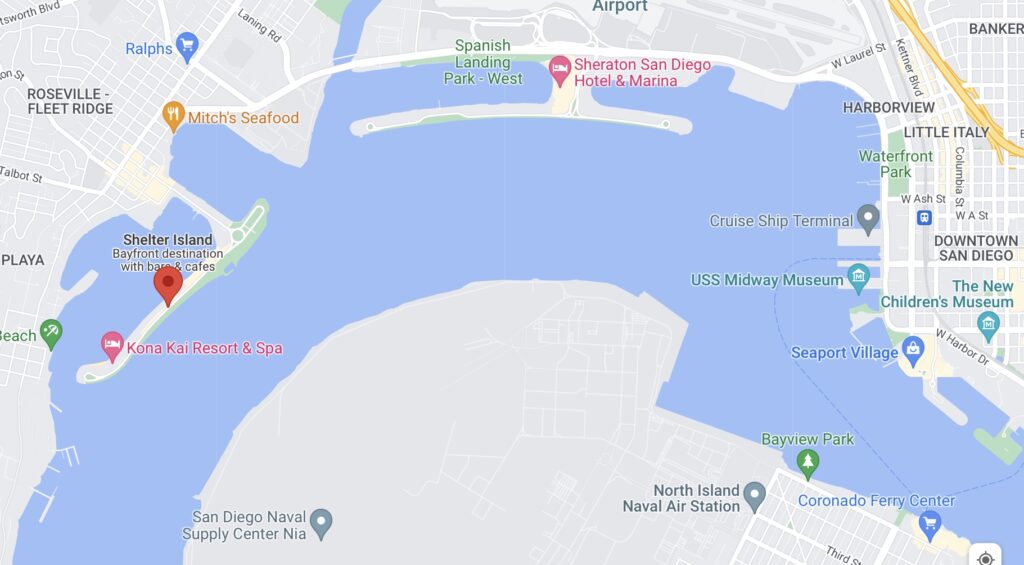
Then a stroke of good luck. Driving around, looking for alternate sites, I came upon nearby Shelter Island, a spot I had never visited before. It is slightly south of Harbor Island and affords distant but unimpeded views of the downtown skyline. Checking TPE, I discovered that this spot would be perfect for that night’s moon rise.
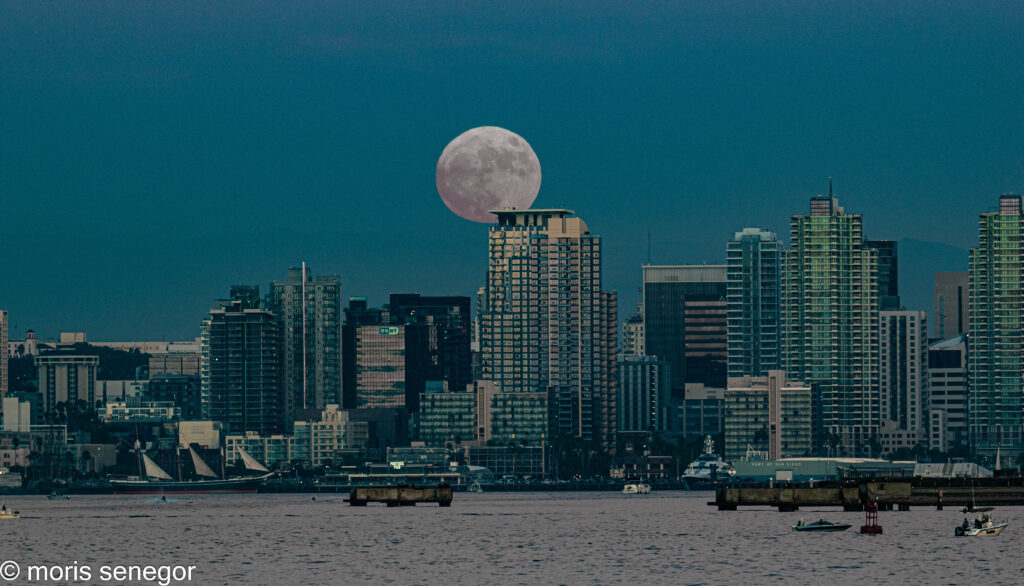
And so, I got my shots.
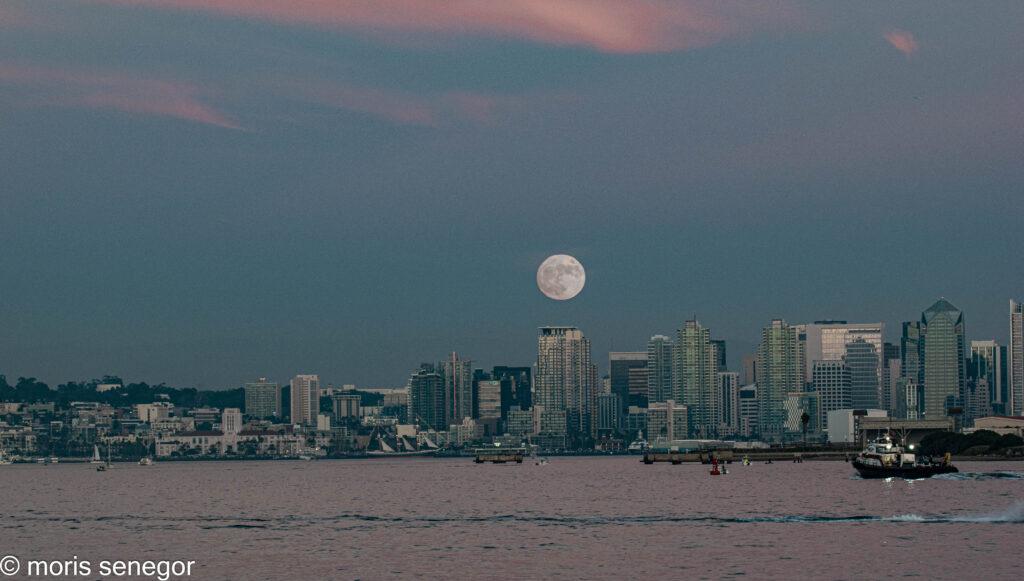
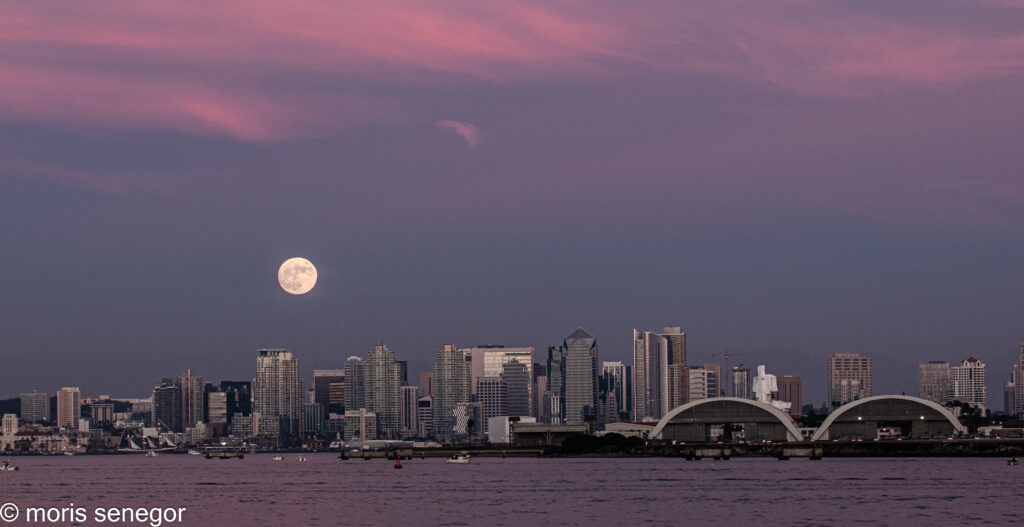
Since then I have put the lessons learned to good use in San Francisco, my home base. I have researched and collected a series of shoot spots for different months and continue to do so to this day. I have become more cautious about moon shoots in unfamiliar cities, realizing that it takes multiple visits and extensive exploration to get good results.
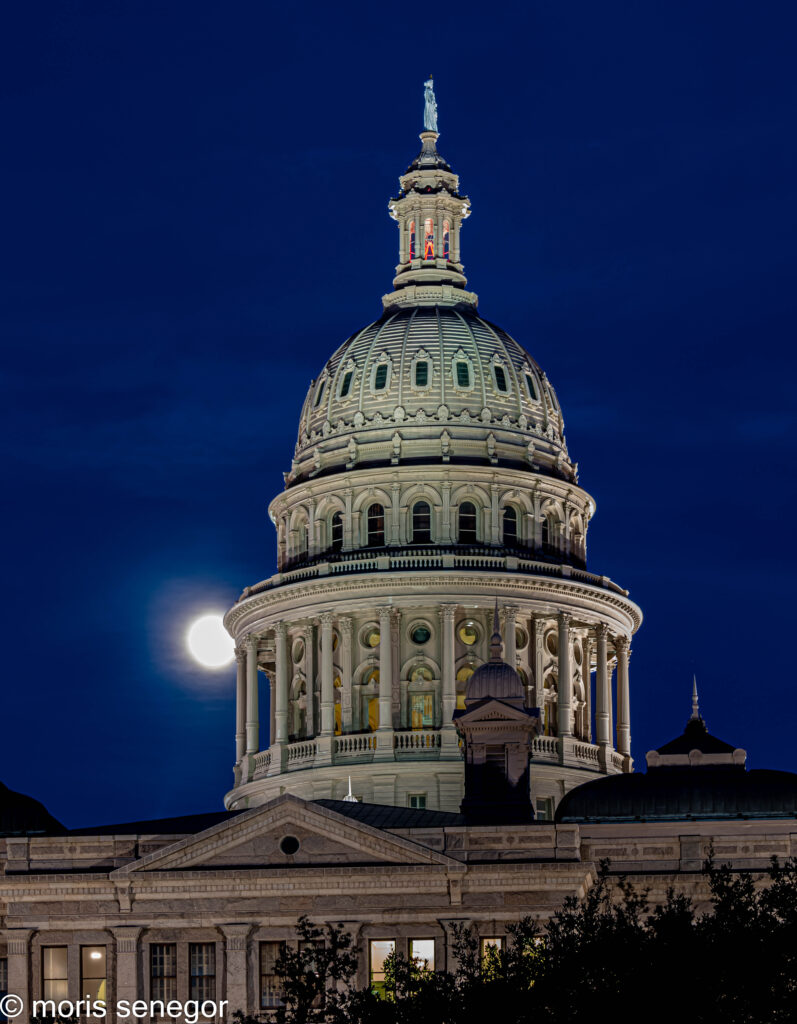
This was again confirmed in October 2021 when I failed in Austin, Texas. It was a city I had never visited and a shoot spot I chose based only on internet research.
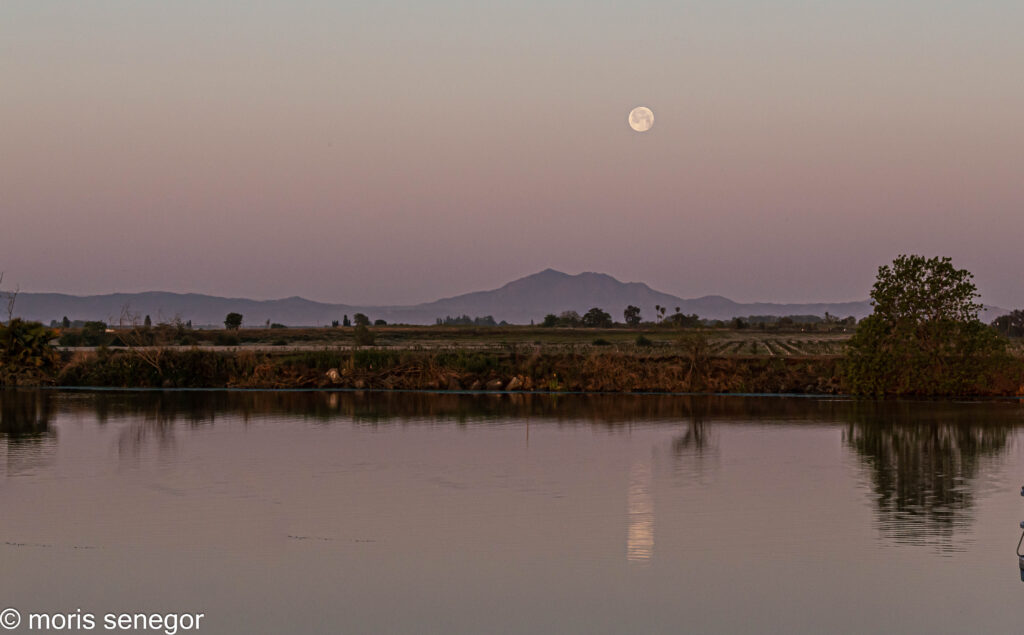
Shooting moon pictures remains perversely attractive, because of the challenges it poses. I continue to learn from my successes and alas, the failures as well.


